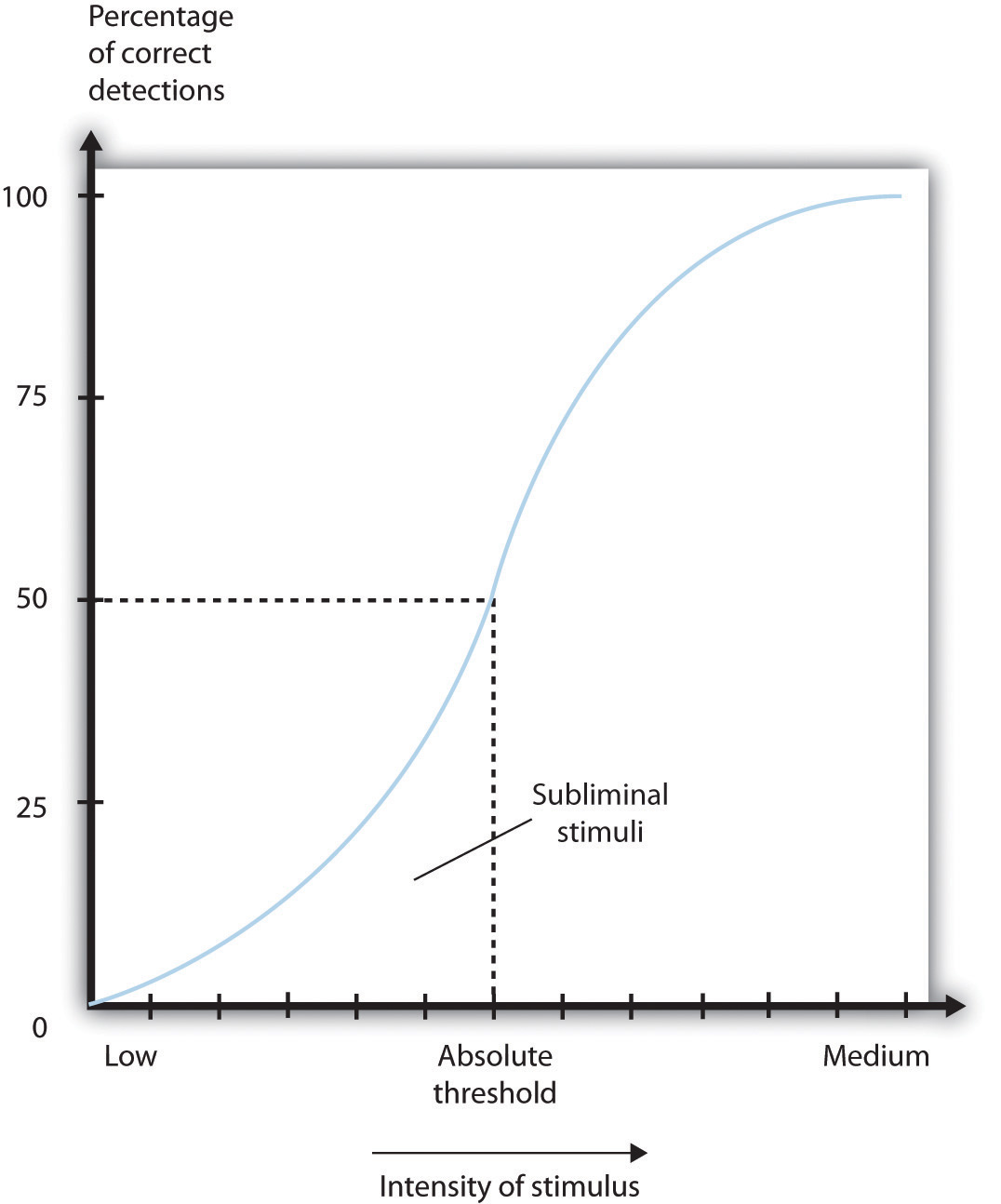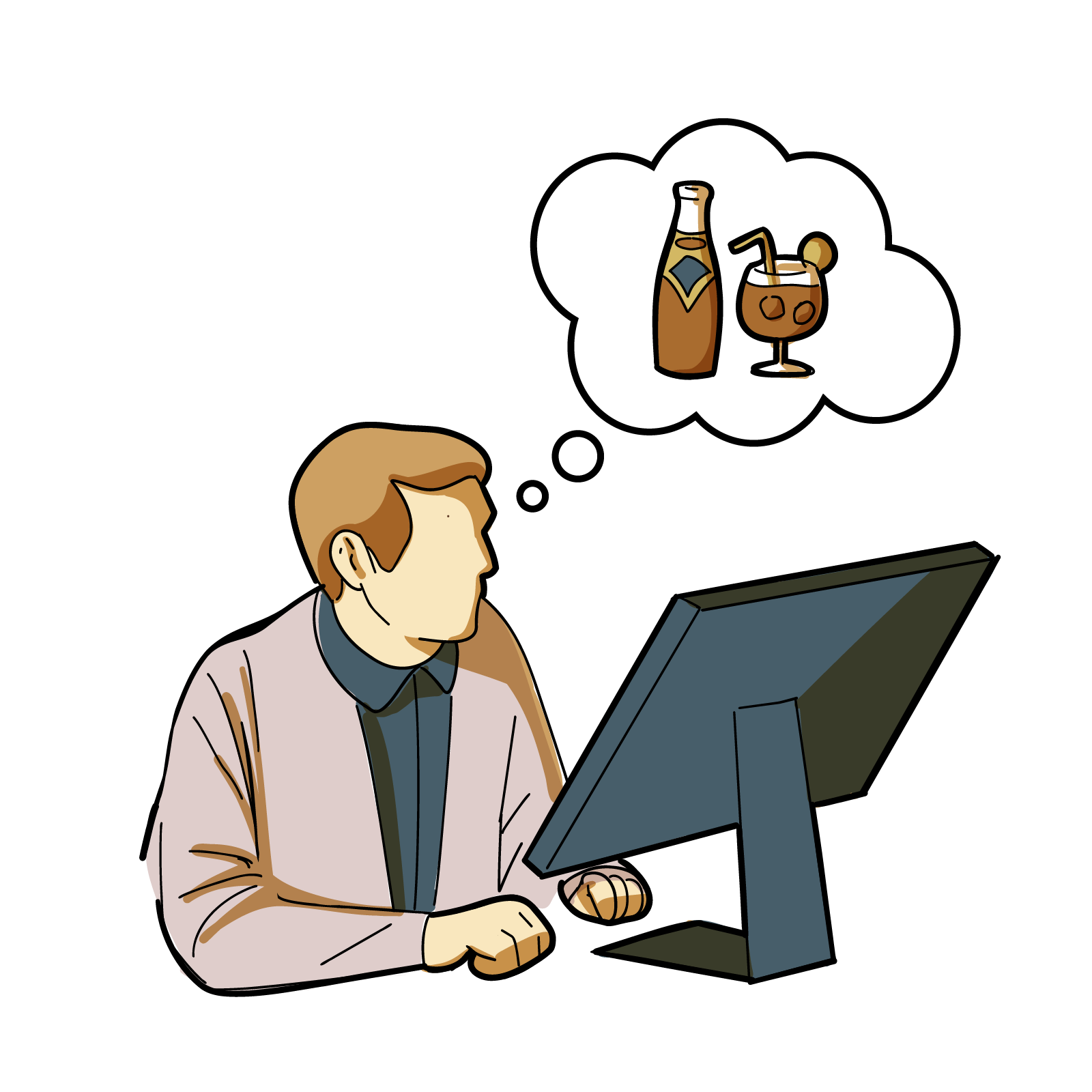Chapter 5. Sensation and Perception
SP.1: Deep Dive – Are You Under the Influence of Subliminal Signals?
Approximate reading time: 4 minutes
In psychology, we learn about something called the “absolute threshold.” This is the point where we start to notice really faint things, like a whisper or a dim light. Once we can notice something more than half the time, we say it’s “conscious.” But what about things that are too faint to notice, like a sound so soft you can’t hear it? These are called “subliminal stimuli,” and they’re interesting because they can still affect how we think and act, even though we don’t realize it.

A variety of research programs have found that subliminal stimuli can influence our judgments and behaviour, at least in the short term (Dijksterhuis, 2010). But whether the presentation of subliminal stimuli can influence the products that we buy has been a more controversial topic in psychology. In one relevant experiment, Karremans, Stroebe, and Claus (2006) had Dutch college students view a series of computer trials in which a string of letters such as BBBBBBBBB or BBBbBBBBB were presented on the screen. To be sure they paid attention to the display, the students were asked to note whether the strings contained a small b. However, immediately before each of the letter strings, the researchers presented either the name of a drink that is popular in Holland (Lipton Ice) or a control string containing the same letters as Lipton Ice (NpeicTol). These words were presented so quickly (for only about one-fiftieth of a second) that the participants could not see them.

Then the students were asked to indicate their intention to drink Lipton Ice by answering questions such as “If you were to sit on a terrace now, how likely is it that you would order Lipton Ice,” and also to indicate how thirsty they were at the time. The researchers found that the students who had been exposed to the “Lipton Ice” words (and particularly those who indicated that they were already thirsty) were significantly more likely to say that they would drink Lipton Ice than were those who had been exposed to the control words.
Example: Subliminal Advertising
Subliminal advertising, a method that sends messages below our conscious awareness, has intrigued psychologists for its potential impact on our behaviour and choices. This type of advertising is subtle and often goes unnoticed, yet it may influence our feelings towards products and brands.
Research presents a nuanced view of its effectiveness. Suresh and Tandon (2018) observed that subliminal messages can subconsciously sway consumer preferences, sometimes positively and sometimes negatively. Similarly, Sofi et al. (2018) and Maalik and Choughari (2020) found that these hidden cues can particularly influence young consumers, nudging them towards impulsive buying. However, the overall impact of subliminal advertising appears to be modest. Trappey’s (1996) meta-analysis suggests that its effect on consumer choice is minimal, a sentiment echoed by Beatty and Hawkins (1989), who doubt its direct influence on purchasing behaviour.
The effectiveness of subliminal advertising can also be context-dependent. A fascinating example is the study by Smarandescu and Shimp (2015), which demonstrated that subliminal messages significantly influenced purchase intentions when participants were in an active thirst state. This suggests that our current needs or states can make us more susceptible to these subtle influences. However, in more typical shopping environments, this effect was not observed, indicating that the power of subliminal messages may be limited to specific situations.
In conclusion, while subliminal advertising can subtly influence our attitudes and behaviours, its overall impact is relatively small and highly dependent on individual and situational factors. For psychology students, understanding the role of these hidden messages in consumer behaviour highlights the complexity of human decision-making processes.
Image Attributions
Figure SUP SP.1 Figure SAP.3 Absolute Threshold as found in Introduction to Psychology & Neuroscience (2nd Edition) is licensed under a CC BY 4.0 License.
Figure SUP SP.2. Subliminal stimuli by Rachel Lu is licensed under a CC BY-NC-SA license.
To calculate this time, we used a reading speed of 150 words per minute and then added extra time to account for images and videos. This is just to give you a rough idea of the length of the chapter section. How long it will take you to engage with this chapter will vary greatly depending on all sorts of things (the complexity of the content, your ability to focus, etc).

